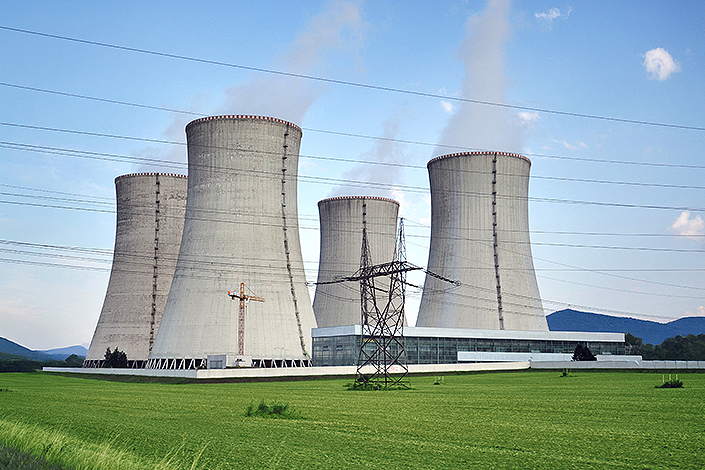By Steve Hedrick
There has been a lot of discussion throughout the state on Marcellus Shale and its cousin to the west, Utica Shale. Perhaps you find yourself asking, “Okay, it’s great that these shale layers are here, and that there are plans in place to take advantage of these to serve the energy needs of the country, but why should I really care? What’s in it for me?”
In the not so distant past, the Kanawha Valley—and the State of West Virginia—were covered with industrial jobs that formed the very foundation of our economy. The development of the Marcellus Shale play could bring a lot of those good, solid manufacturing jobs back to our area.
As has been already said, the Marcellus Shale is rich with natural gas liquids. Chief among these liquids is ethane, an important petrochemical feedstock. The highest use for this ethane would be to convert it to ethylene, which is the single largest industrial chemical in the world.
You may not realize this, but products made from ethylene are literally all around us. We are wearing them, walking in and on them, looking through them, sitting and sleeping on them; we are eating and drinking products of ethylene and using them to eat and drink; we use them when we wash ourselves, the dog or the dishes, when we paint the house or when we talk to colleagues, travel to see them and return safely home again. We live our lives and our lives are significantly improved because of the vast number of products derived from ethylene.
That’s why, without a doubt, the ethane in the Marcellus Shale is an important find for the chemical industry. It is so significant that it will spark what Cal Dooley, the president and CEO of the American Chemistry Council, has referred to as a renaissance of the chemical industry in the United States.
“Thanks to abundant, affordable natural gas,” Dooley has said, “the nation’s chemical companies have entered an era of renewed global competitiveness which can help generate new domestic investment, jobs and manufacturing exports.”
What’s not yet for certain is where in the United States this renaissance will occur.
The Production Process
As a primer, there are several steps associated with addressing the ethane in the Marcellus Shale.
The first step is to extract the wet natural gas from the shale rock formation using horizontal drilling methods and hydraulic fracturing, or fracing, to open fissures within the rock, through which the wet natural gas flows into the drilled line and up to the surface.
The next step is to transport these mixed materials from the various drilling sites to one of several centralized locations. At these sites other companies will remove the natural gas liquids using cryogenic separation. Some of these liquids will be blended back into the natural gas—up to the limit allowed for interstate transportation of the gas.
The remaining liquids are transported from these various locations to a few fractionation sites, where the liquids are further separated. Some liquids, like propane and butane, are sold directly into local commerce or may be used to fuel transportation fleets, but the bulk of the remaining liquids is the orphaned ethane that is typically converted into ethylene in a process called cracking.
According to Kevin DiGregorio, the executive director of the Chemical Alliance Zone, the process of cracking can be described as this: the ethane molecule is literally split into two—cracked—allowing it to then reform into ethylene, the largest-volume petrochemical produced in the world.
The Future of Cracking
Currently, there are no crackers located in our region or in the Northeast U.S. Most of the existing crackers in North America are either along the Gulf Coast or in Canada.
So, the multi-billion dollar question on the table, which will be answered over the next several months, is “Will the ethane be shipped out of here to be cracked in Canada or the Gulf Coast, or will it be cracked here, where the first commercial process for cracking ethane to ethylene was deveoped?”
Corky DeMarco, president of the West Virginia Oil and Natural Gas Association, has said, “Based on what we currently know, when completely developed these two shale plays will support at least four world-scale ethane crackers.”
Shell Chemical plans to provide the first local solution. In March 2012, they announced their intention to continue investigation into a 500-acre parcel along the banks of the Ohio River near Monaca, PA to be developed for producing local ethylene and other downstream production. This site is within 10 miles of the West Virginia border.
Bayer CropScience also has two local facilities available where someone could build crackers to further serve the local area, and there are other suitable locations throughout the region.
While some companies desire to leverage their existing assets in the Gulf Coast, or even build new construction there, all of these other distant options result in the destruction of value, especially for those of us in West Virginia.
First, the value of the ethane is reduced because it needs to be shipped away from here, and that costs money.
Second, cracking is accomplished elsewhere, so the investment associated with that and the good, solid manufacturing jobs to bring this about would happen somewhere else.
Third, the ethylene is converted to useful intermediate chemicals somewhere else.
DiGregorio agrees, saying, “Probably 40 percent to 60 percent of all the world’s chemicals come from ethylene. That means it takes many manufacturing facilities to produce those chemicals—not just a cracker.”
The American Chemistry Council also agrees. They predict that with this renaissance more than five additional other jobs are created in an area for each chemical manufacturing job in a community.
So, if the cracker is elsewhere, all of that additional investment—and those additional good, solid, manufacturing jobs—occur elsewhere.
Fourth, the consumer products that are all around us will be located close to the source of the useful intermediate chemicals. These consumer products will get made somewhere else, and so those investments and their good, solid, manufacturing jobs are also somewhere else.
Finally, most of those finished products are consumed back here to the Northeast, where most of the U.S. population lives. If made elsewhere, the final cost will be higher than if they were made here in the Appalachian region in the first place.
The only remaining question will be: will this shale gas be just another West Virginia extraction industry which, to paraphrase many of the detractors, solely enriches out-of-state owners, or will these shale gases be a genuine game changer for our area that sparks a manufacturing resurgence for our region and, with it, renewed economic vitality for the Kanawha Valley and the State of West Virginia?
We should all care about the answer to that question because the answer will affect us all for generations to come.








